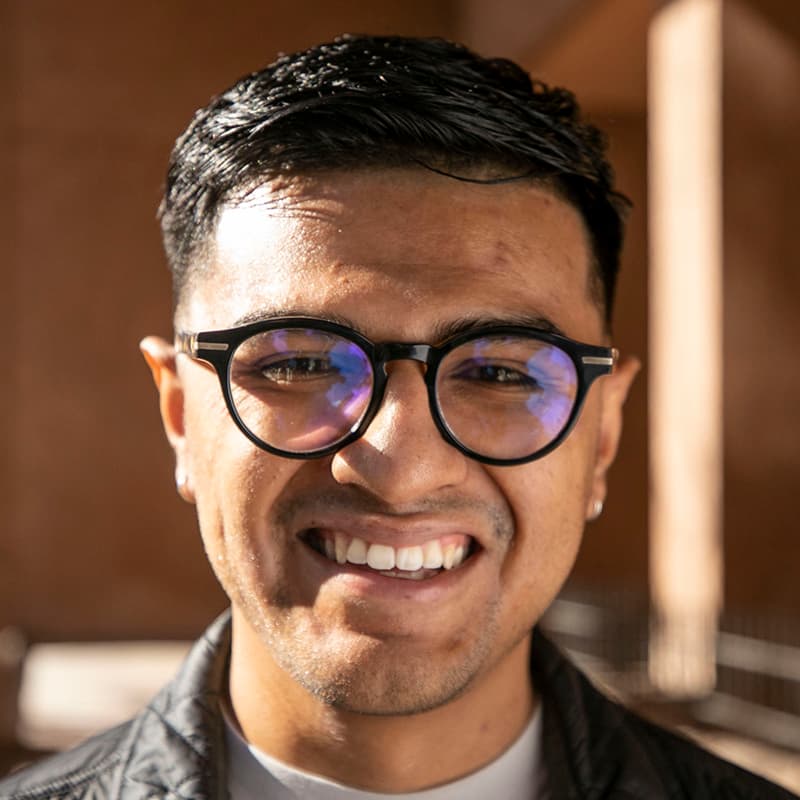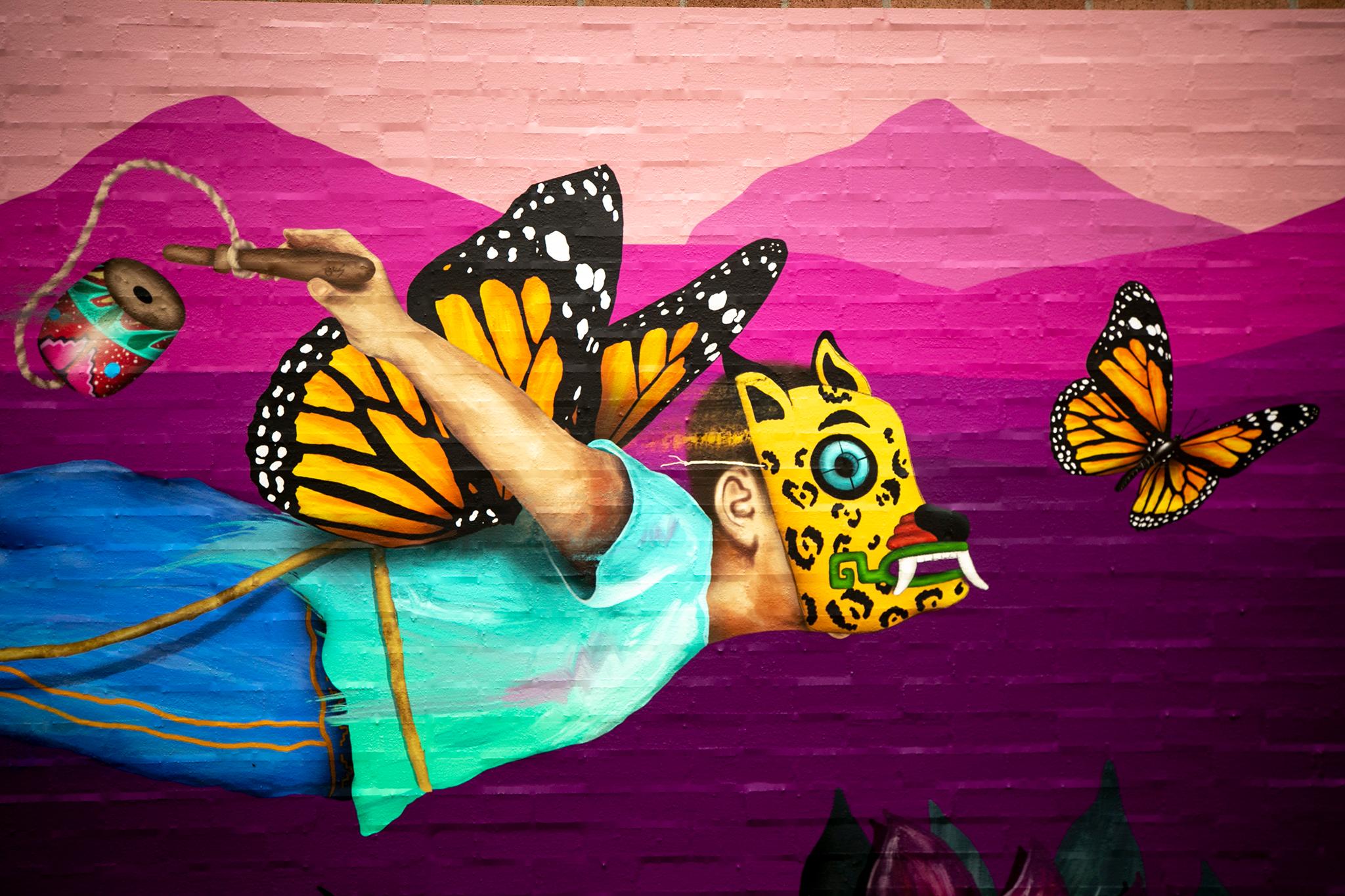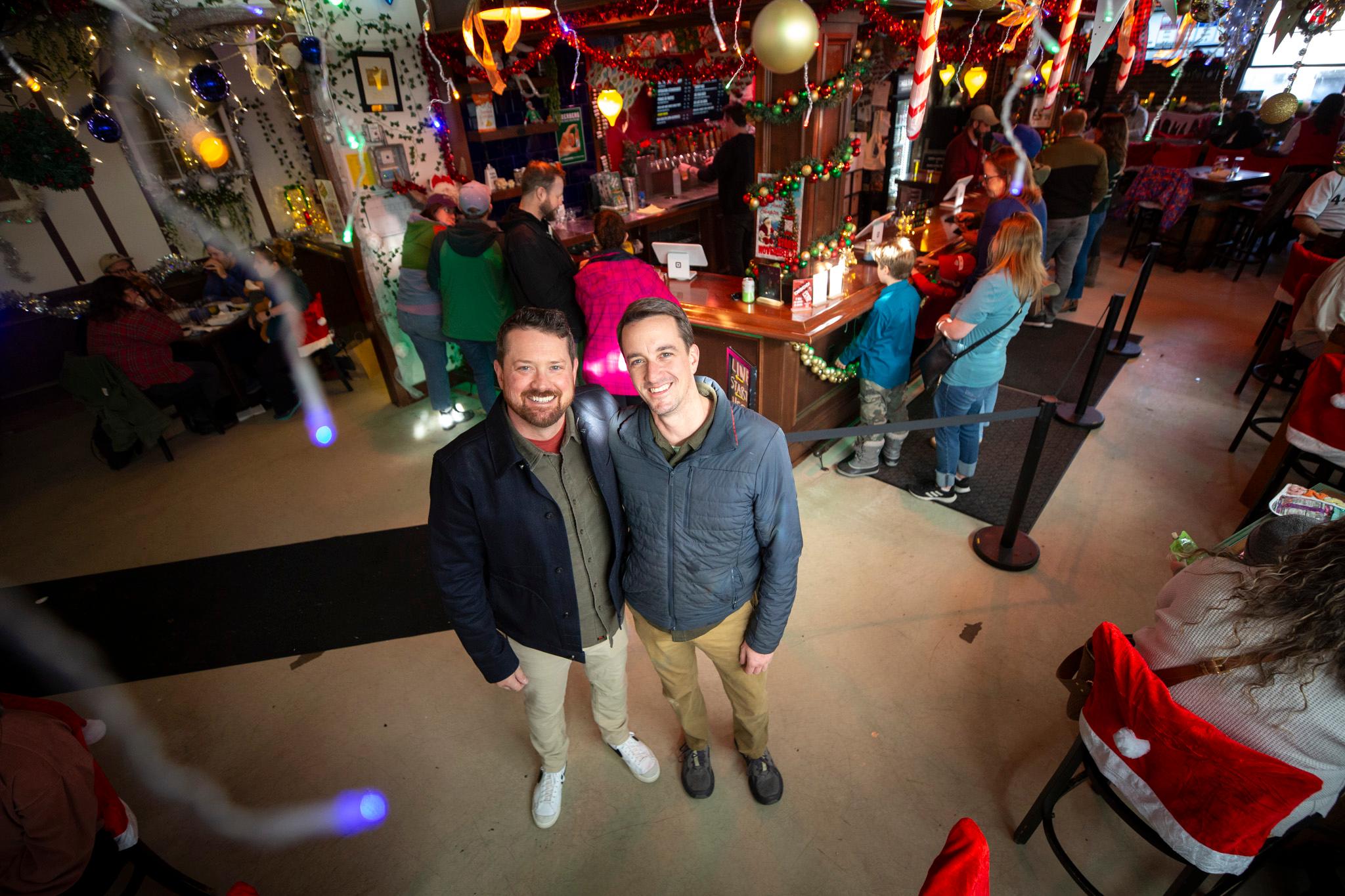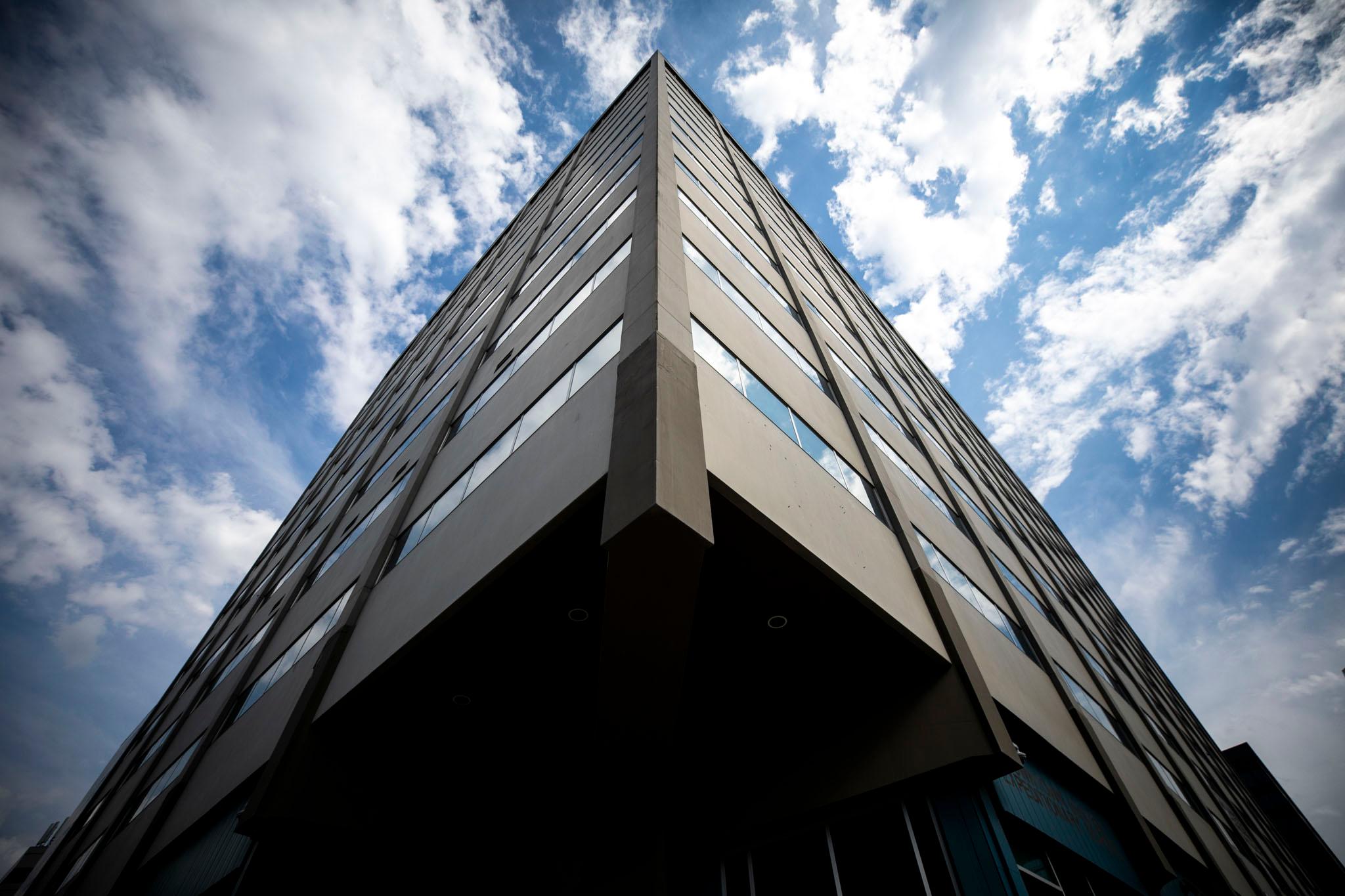Accompanied by a platoon of monarch butterflies, symbols of migration, a child wearing a yellow jaguar mask flies through a purple mountain range and above a field of purple dahlias. The boy brings with him a balero and trompo, two traditional Mexican toys, and tied around his waist is a small brown home. The vinyl mural is a splash of color that sits against the brick wall of the Center for Bioethics and Humanities Fulginiti Pavilion.
Titled "Fly to Heal," the piece is the first exterior mural at the University of Colorado Anschutz Medical Campus in Aurora. Designed by Westwood artist Julio Mendoza, artistically known as Juls, the mural is homage to the plight of immigrant children and was created from personal experience.
"This image was easy to create because I was recreating something that I already experienced," Mendoza said. "It's unknown where he is going but all he knows is that in this place there are mountains and people there speak English. I was 11. That's all I knew about Denver."
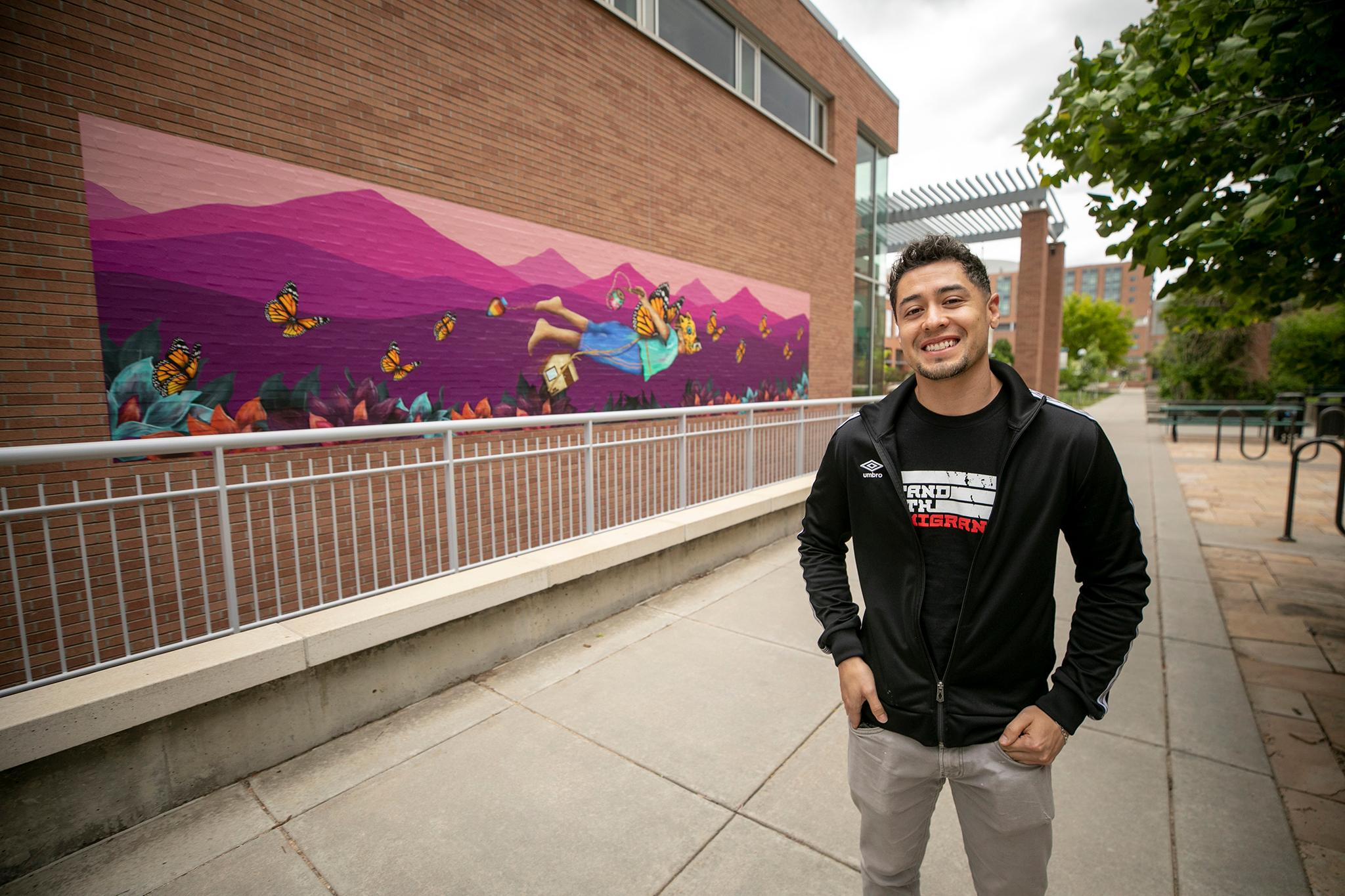
Part of a larger series called "Testimony," by the Center for Bioethics and Humanities and The Kempe Center, the focus is on amplifying the voices and stories of children in migration.
Professor Warren Binford, an international children's right scholar, lawyer and advocate, helped co-found Project Amplify, a national nonprofit that helps establish legal protections for child migrants in government care.
Through her work, she realized that muralists like Mendoza were crucial in helping bring the experiences of migrant children to the forefront.
"We recognized that lawyers can advocate in the courtroom, but we are not the ones that create the public consciousness. That's what muralists do. That's what artists do. That's what composers do," Binford said. "To have someone like Juls who himself migrated to the United States is such an act of creative generosity that I am so indebted to him."
Mendoza was selected from a pool of over 96 artists worldwide to create the final design for the first ever exterior mural at the CU Anschutz campus.
With the help of Westwood non-profit Re:Vision, Mendoza opened his own studio earlier this year in Denver. His cultural surrealist work draws from Aztec, Mayan and aspects of Latinidad that heavily inform how he sees the world around him.
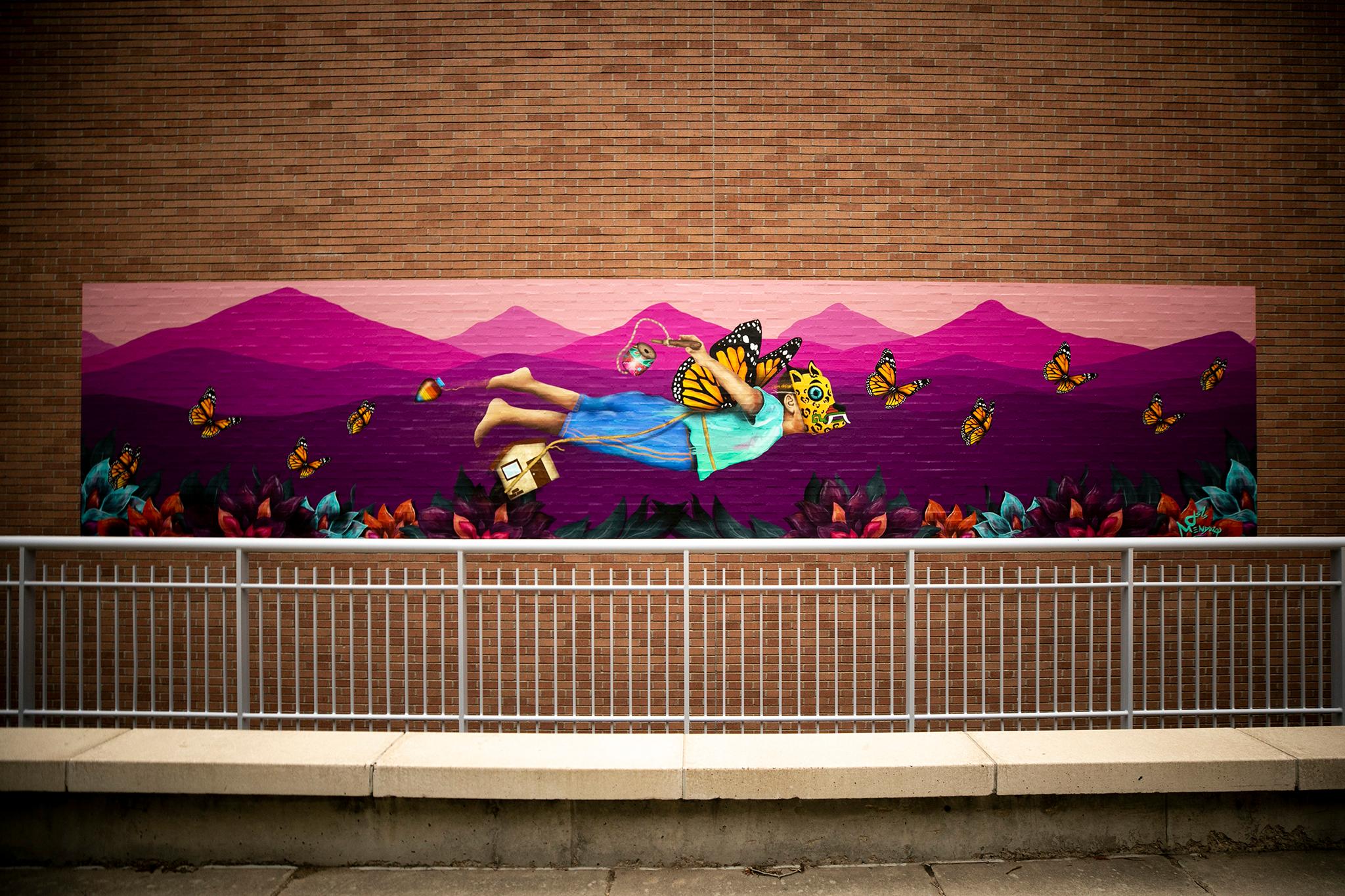
El trompo was one of Mendoza's favorite toys growing up, and the mural conveys just how difficult it was for Mendoza to let go of childhood memories he had created.
"The jaguar mask represents his culture but he wears this mask to hide his fears and feeling uncomfortable, timid and insecure," Mendoza said. "I feel that's what happened when I first came here and went to middle school. It kind of made me into a super quiet kid."
Mendoza's father decided to move his family to Denver in 2001 due to the violence that they were experiencing in the border town of Juarez. A decision that he had no say in.
"Here, every park seemed like a perfect place for a soccer field. But I wouldn't see a lot of people just playing outside. Everything was different here," Mendoza said. "I struggled to adjust, to not hate being in Denver."
His mural helped open the "Art as Advocacy" exhibit which highlights four artistic projects that were inspired by sworn testimonies of children arriving in the U.S. in 2019. The effort wishes to bring stories like Mendoza's and many others to the public consciousness through the summer and into the fall.
Mendoza hopes this will be the first of many murals to be put up across the campus, and he hopes it will connect with faculty, students and anyone who happens to pass by.
"I hope some people do connect with the mural and learn about the struggles that children go through when they migrate to another country."
